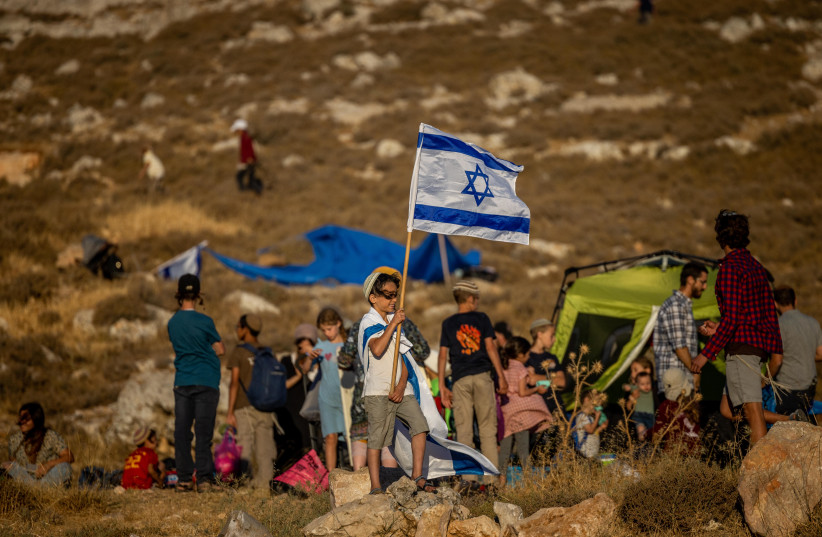It has become quite tricky, difficult, and even very challenging for a media consumer to get relatively fair, objective, and factual news relating to Israel, and not only from the foreign press.
Just recently, a senior Israeli newspaperman wrote that “71% of Palestinians say they support ‘armed struggle’ against Israel – code for violent attacks.”
As any dictionary informs us, “armed struggle” is when someone who is carrying a weapon, usually a gun, intends to use it to cause injury and more usually death. A 50-year-old Fatah pamphlet titled “Political and Armed Struggle” makes it starkly clear: it is “waging a battle with arms.” Why did the writer feel it necessary to tone down the term and just use “violent attacks”?
Moreover, the terminology is, in a sense, disguising the ferocity of the actions and their intent. The 1964 PLO Charter’s Article 9 reads “Armed struggle is the only way to liberate Palestine,” and Article 10 terms that as “Commando action.” Death of Israelis, Jews, and tourists in Israel is the path to freedom of “Palestine.”
The media have for decades sought to employ their own semantic instrumentalities to interpret the Arab attempt to eliminate Zionism and to serve, if unwittingly, the cause of pillorying and coloring Israel’s policies and actions to the detriment of the actual events occurring and Israel’s responsibility for them, if any.

History of Judea and Samaria
In a June 29 piece penned by Isabel Kershner, The New York Times sought to “explain” Israel’s “expansion of settlements.” In it, she wrote: “supporters of the settler movement... view the West Bank, which they call by its biblical names, Judea and Samaria.” Those geographical names, of course, besides rooting Israel’s historical connection to this land, were in use all throughout the period of the British Mandate for Palestine as well as most maps for the past few centuries. In the 1947 United Nations partition proposal, in the section delineating the Jewish state’s borders-to-be, Judea and Samaria were employed. But, yes, those are biblical names.
On the other hand, Kershner used the term “West Bank” without any addition. In fact, the Times, like many other newspapers, does so freely without providing any commentary. Do the readers know the origin of that name? Who coined it? When?
Did she consider that, perhaps, her readers would become more enlightened if she had added, in parallel, that the “West Bank” was a 1950 Jordanian linguistic invention when, in April that year, Jordan annexed it, doing so illegally? In fact, it was a naked occupation; other than Great Britain and perhaps Pakistan, no other country, not one Arab state, recognized Jordan’s rule over the territory.
Incidentally, nowhere in her background piece did Kershner see fit to note that Article 6 of the 1922 League of Nations Mandate included a guaranteed right of “close Jewish settlement” throughout the territory to become the reconstituted Jewish national home, which at that time extended from the Mediterranean Sea to the Jordan River, with undefined territories east of the Jordan River in abeyance temporarily.
In another case, US Secretary of State Antony Blinken was interviewed by Richard Hass of the Council on Foreign Relations on June 26. The media widely, and even prominently, highlighted his words that he had told both Israel’s prime minister and foreign minister that, basically, “if there’s a fire burning in their backyard, it’s going to be a lot tougher, if not impossible, to actually both deepen” potential diplomatic agreements with Arab countries as well as existing ones. Many media outlets played those words as bashing for Israel.
Since June 29, I have been searching the media for a report on whether Blinken spoke with French President Emmanuel Macron to discuss the fires burning in his backyard; or reports on why he hasn’t made that call. In the context of international diplomacy, it would be nice to know whether Israel is treated as an equal to other American allies, or whether Israel is subjected to a negative extraordinary treatment. If readers are not provided with all possible angles, the media are not only channeling the news for its consumers but blindsiding them as well.
A June 20 Voice of America radio report dealing with “Palestinian refugees” misleadingly informed that “almost 900,000 Palestinians living in the West Bank are classified as refugees, meaning they were displaced from their homes in... 1948.” In truth, as the CAMERA organization pointed out, perhaps there are maybe 10,000 Palestinians living there who were displaced from their homes in 1948. Numbers aside, do the media ever note the numbers of Jews who were displaced, even ethnically cleansed, from their homes at that time?
There were Jews living in Gush Etzion, the Dead Sea area, as well as the environs of Jerusalem and the city who were turned into refugees at that time, not to mention the Jewish communities of Hebron, Gaza, and Nablus who had to flee already in 1929. Residents of Nahalat Shimon and Shimon Hatzadik neighborhoods in the city’s eastern section were forced to become displaced after Arab attacks during December 1947-January 1948. That background, of course, would provide context to the ongoing Sheik Jarrah hullabaloo, a media circus in its own right.
These are but a few of the examples of the large and small media failings when reporting and commenting on the Arab conflict with Israel. They pile up and pervert the media’s consumers’ understanding and appreciation of the complexity of the issues by simply hiding, misstating, and twisting words, terms, and events.
The writer is a researcher, analyst, and opinion commentator on political, cultural, and media issues.
